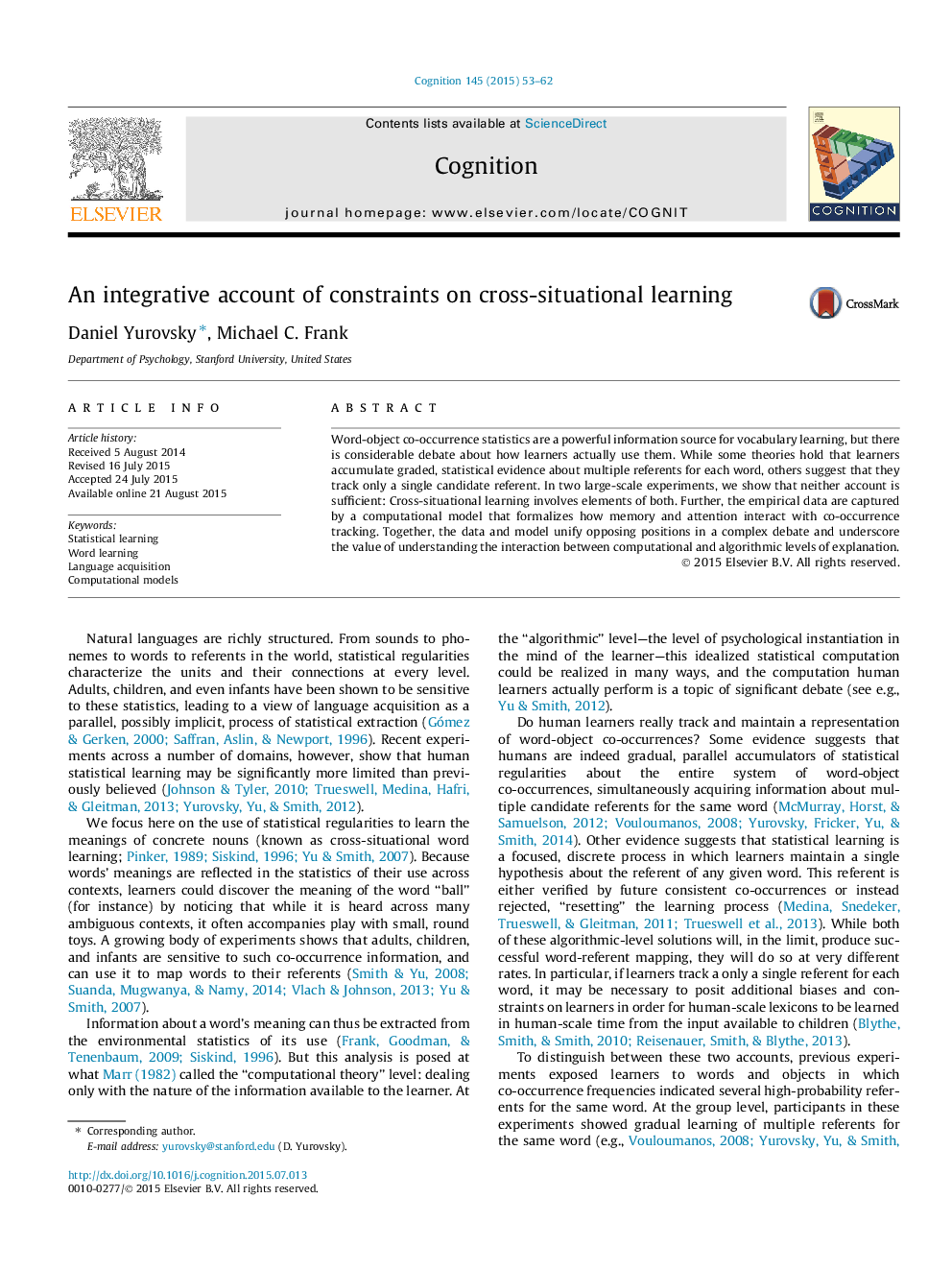| Article ID | Journal | Published Year | Pages | File Type |
|---|---|---|---|---|
| 7286551 | Cognition | 2015 | 10 Pages |
Abstract
Word-object co-occurrence statistics are a powerful information source for vocabulary learning, but there is considerable debate about how learners actually use them. While some theories hold that learners accumulate graded, statistical evidence about multiple referents for each word, others suggest that they track only a single candidate referent. In two large-scale experiments, we show that neither account is sufficient: Cross-situational learning involves elements of both. Further, the empirical data are captured by a computational model that formalizes how memory and attention interact with co-occurrence tracking. Together, the data and model unify opposing positions in a complex debate and underscore the value of understanding the interaction between computational and algorithmic levels of explanation.
Related Topics
Life Sciences
Neuroscience
Cognitive Neuroscience
Authors
Daniel Yurovsky, Michael C. Frank,
